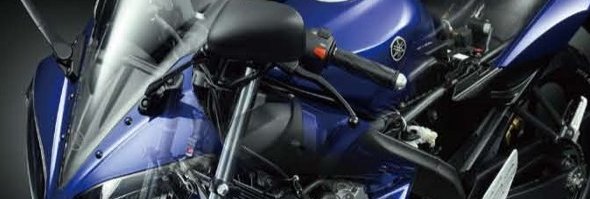Personal area network
A personal area network (PAN) is a computer network used for communication among computer devices close to one person. Some examples of devices used in the PAN are personal computers, printers, fax machines, phones, PDAs, scanners, and even video game consoles. As PAN may include cable and wireless connections between devices. Reach of PAN is usually at least about 20-30 feet (approximately 6-9 meters), but is expected to increase with technology improvements.
Local area network
Local Area Network (LAN) is a computer network covering a small physical area, such as home, office, or a small group of buildings such as schools, or airports. LAN cable is currently more likely to be based on Ethernet technology, although new standards such as ITU-T G.hn also provides a way to make the LAN cable using existing cable home (coaxial cable, telephone line and electricity).
For example, a library may have a cable or wireless LAN for users to connect local devices (eg, printers and servers) and to connect to the internet. In the LAN cable, the PC at the library is usually associated with category 5 (CAT5) cable, running IEEE 802.3 protocol through a system of devices that touch and finally connected to the Internet. Cable to the server is usually in Cat 5e enhanced cable, which will support IEEE 802.3 at 1 Gbit / s.Wireless LAN may have to use a different IEEE protocol, 802.11b, 802.11g or 802.11n possible.Staff computers (bright green in the photo) can reach the color printer, checkout records, and academic networks and the Internet. All computer users can and card catalogs to the Internet. Each workgroup can to a local printer. Note that the printer can not be accessed from outside their work groups.
All devices must understand the network layer (layer 3), because they are handling more than one subnet (different color). Those in the library, which is only 10/100 Mbit / s Ethernet connection to the user device and a Gigabit Ethernet connection to the central router, can be called "layer 3 switches" because they only have Ethernet interfaces and must understand IP. Will be more accurate to call them access routers, where the router at the top is a router that terhubung circulation to the Internet and academic networks' customer access routers.
Characteristics that determine the LAN, with different WAN (Wide Area Networks), including their data transfer speed is higher, a smaller geographical coverage, and lack of telecommunications needs of leased lines.Current Ethernet or other IEEE 802.3 LAN technologies operate at speeds up to 10 Gbit / s. EEE has projects investigating the Standardization of the 40 and 100 Gbit / s.
Campus area network
A campus area network (CAN) is a computer network consisting of interconnected local area network (LAN) in a limited geographic area. This can be regarded as a form of metropolitan area network, specific to academic settings.
In the case of a university campus-based campus area network, network possible to connect various campus buildings including; academic departments, university libraries and student living quarters. A campus area network is greater than the local area network but smaller than wide area network (WAN) (in some cases).
The main purpose of a campus area network is to facilitate students accessing internet and university resources. This is a network that connects two or more LAN but is limited to a specific geographic area and adjacent to the campus, industrial complex, building perkantoran, or a military base. BISA can be considered as a type of MAN (metropolitan area network), but generally limited to a smaller area of common man. The term is most often used to discuss the implementation of the network to the adjacent area. This can not be confused with a Controller Area Network. A LAN connects network devices through a relatively short distance. A network perkantoran building, school, or home usually contains a single LAN, though sometimes one building will contain several small LAN (perhaps one per room), and occasionally a LAN will span a group of buildings in dekatnya.
Metropolitan area network
A metropolitan area network (MAN) is a network that connects two or more local area networks or campus area networks together but do not transgress limits direct city / town. Router, switch and hub connected to create a metropolitan area network.
Wide area network
A wide area network (WAN) is a computer network that covers large areas (eg network link that cross metropolitan, regional, or national boundaries [1]).Less formal, WAN is a network that uses routers and public communications link.Contrast with personal area networks (PANS), local area network (LAN), campus area network (tin), or metropolitan area networks (Mans), which is usually limited in a room, building, campus or specific metropolitan area (for example, a city Largest and most famous example of WAN is the Internet. A WAN is a data communication network that covers a fairly wide geographic area (ie one city to another city and one country to another country) and often use the transmission facilities provided by public transportation, such as phone companies. WAN technologies generally function under the three-layer OSI reference model: physical layer, data link layer and network layer.
Global area network
Global area network (GAN) (see also IEEE 802.20) specification is under construction by several groups, and there is no common definition. In general, however, a GAN is a model to support communications services across a number of arbitrary wireless LAN, satellite coverage area, and other major challenges in mobile communications is "give off" the user communications from one local area to cakupan In IEEE Project 802, this involves land succession WIRELESS local area network (WLAN).
Virtual private network
A virtual private network (VPN) is a computer network where some of the link between node carried by open connections or virtual circuit in some larger networks (eg, Internet) and not with the physical cable. Data link layer network protocol is said virtual tunnel through a larger network when this happens. One of the applications in the general public communication via the Internet, but the VPN does not need explicit security features, such as authentication or content encryption. VPN, for example, can be used to separate the traffic of other users through a network of people with basic security features that strongly.
VPN may have best effort performance, or may have set a level of service agreement (SLA) between the VPN client and VPN service provider. Generally, a VPN topology more complex than point-to-point.
VPN allows computer users to perform editing from IP addresses other than the actual location of the computer connecting to the Internet.
Internetworking
Internetworking is a connection of two or more distinct computer networks or network segments via a common routing technology. The result is called Internetworking (often abbreviated to the internet). Two or more networks or network segments connected using devices that operate at layer 3 (the 'network' layer) of the Policy OSI Reference Model, such as routers. Each interconnection between or among public, private, commercial, industrial, or government networks can also be defined as an Internetworking.
In modern practice, the inter-relation networks using Internet Protocol. There are at least three variants of Internetworking, depending on who is managing and participating in it:
1. Intranet
2. Loans
3. Internet
Intranet and Extranet may or may not have a connection to the Internet. If connected to the Internet, intranet or ekstranet usually protected from being accessed from the Internet without otorisasi the right.Internet is not considered part of the intranet or ekstranet, although may serve as a portal for access to parts of an Extranet.
1. Intranet
Intranet is a set of networks, using Internet protocol and IP-based tools such as web browsers and file transfer applications, which is under the control of one administrative entity. Administrative entity closes the intranet to all but specific, authorized users. Generally, an intranet is an internal network organization. Large intranet will typically have at least one web server to provide users with information organization.
2. Loans
A network or Internetworking ekstranet is limited in the scope of an organization or entity, but it also has a limited connection to the network from one or more other usually, but not essential, trusted organizations or bodies (for example, a customer may be given access to some parts of the intranet in this way create a ekstranet, while at the same time customers may not be considered 'terpercaya' from the security point of view). Technically, an Extranet can also be categorized as a CAN, MAN, WAN, or other type of network, however, by definition, an Extranet can not consist of a single LAN; it must have at least one relationship with the external network.
3. Internet
Internet consists of interconnected world government, academia, public and private networks based on Internet Protocol Suite network technology. This is the continuation of the Advanced Research Projects Agency Network (ARPANET) developed by DARPA of the U.S. Department of Defense. Internet is also the communications backbone underlying the World Wide Web (WWW).The 'Internet' is most often spelled with the letter 'I' as a noun, for historical reasons and to distinguish it from other generic Internetworking.
Participants on the Internet using various methods of several hundred documented, and often standard protocol compatible with the Internet Protocol Suite and a pengalamatan system (IP Addresses) and managed by the IANA registrar address. Service providers and large companies exchange information about the reachability of their address space through the Border Gateway Protocol (BGP), forming a mesh from the center of the world redundan delivery.







